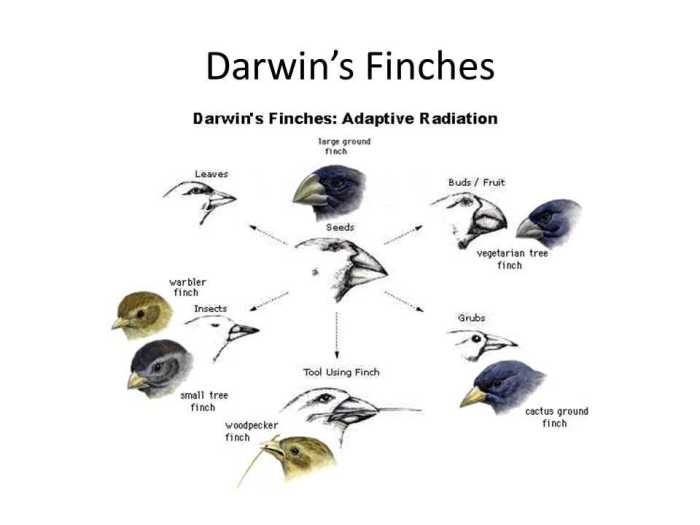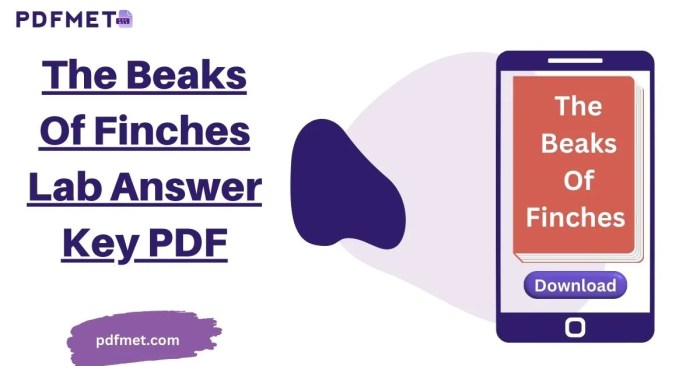The Beaks of Finches Student Laboratory Packet Answers delves into the captivating study of Darwin’s finches, providing an in-depth exploration of the evolutionary forces that have shaped their remarkable adaptations. This laboratory packet guides students through a series of experiments and data analysis exercises, offering a hands-on approach to understanding the fundamental principles of evolution.
Through the examination of beak morphology, diet, and environmental factors, students will gain insights into the processes of natural selection, adaptive radiation, and speciation. The laboratory packet serves as an invaluable resource for students seeking to deepen their comprehension of evolutionary biology.
Overview of the Finches’ Beaks Laboratory Packet

The finches’ beaks laboratory packet is a valuable educational resource that provides students with an opportunity to explore the evolutionary adaptations of Darwin’s finches.
The laboratory packet is designed to help students understand the principles of natural selection and the role of environmental pressures in shaping the evolution of species.
Materials and Methods

The finches’ beaks laboratory packet requires the following materials:
- Specimens of Darwin’s finches with different beak shapes
- Measuring tools (e.g., calipers, rulers)
- Data collection sheets
- Statistical software (optional)
The experimental procedures involved in the laboratory packet include:
- Measuring the beak length and width of each finch specimen.
- Recording the data on a data collection sheet.
- Analyzing the data to identify trends and patterns in beak shape variation.
- Drawing conclusions about the evolutionary adaptations of Darwin’s finches.
Data Analysis

The data collected from the finches’ beaks laboratory packet can be organized into tables or charts to facilitate analysis.
Graphs or diagrams can be created to illustrate the data and identify trends and patterns.
Statistical analysis can be performed on the data to test hypotheses and determine the significance of the results.
Discussion of Results: The Beaks Of Finches Student Laboratory Packet Answers

The results of the finches’ beaks laboratory packet provide evidence for the theory of evolution by natural selection.
The variation in beak shape among Darwin’s finches is a result of the different environmental pressures that the finches have faced on the Galapagos Islands.
The results of the laboratory packet can be compared to previous studies on the finches’ beaks to further our understanding of the evolutionary history of these birds.
FAQ Summary
What is the purpose of The Beaks of Finches Student Laboratory Packet?
The laboratory packet aims to provide students with a hands-on experience in studying the evolutionary adaptations of Darwin’s finches.
What materials are required for the laboratory packet?
The materials required may vary depending on the specific laboratory exercises, but typically include specimens of finch beaks, data tables, and statistical analysis software.
How is the data from the laboratory packet analyzed?
The data is organized into tables or charts, and graphs or diagrams are created to illustrate the data. Statistical analysis is performed to identify trends and patterns.